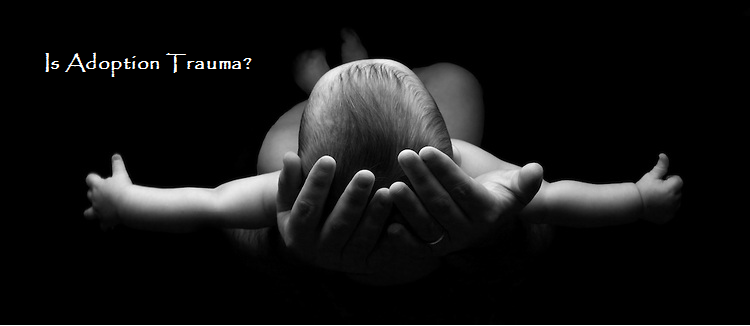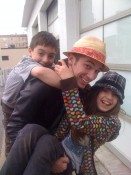Terril L. Blanton and Jeanne Deschner
Terril L. Blanton, M.S.S.W., C.S.W., is Crisis Pregnancy Counselor, Buckner Baptist Benevolences, Dallas, TX. Jeanne Deschner, Ph.D., is Associate Professor, Graduate School of Social Work, University of Texas at Arlington, TX.
1990
Advocates of open adoption believe that it lightens and in some cases alleviates the grieving process after relinquishment. Advocates of confidential adoption, however, believe that open adoption limits and denies the grieving process that must take place for subsequent life adjustment. A study of 59 women who had placed a child for adoption through an agency–18 via open adoption and 41 via confidential adoption–revealed significant differences between the two groups on five subscales of the research instruments. Implications of this pioneer study in this new practice area are discussed and further research suggested.
Within the past decade many assumptions have been made concerning how biological parents, particularly biological mothers, feel about the children they have relinquished for adoption. A review of the literature regarding biological mothers’ adjustment to the relinquishment of a child indicates that grief and mourning are central to their experience [Burnell and Norfleet 1979; Millen and Roll 1985; Richmond 1975]. A controversy prevails among adoption professionals about which method of adoption, open or confidential, promotes a healthier approach to the anticipated grief and postadoptive adjustment of biological mothers.
Open adoption generally refers to some degree of sharing of information and/or actual contact between adoptive and biological parents [Curtis 1986] that may occur during or after the adoption process. Advocates of open adoption assert that this method of adoption lightens and in some cases alleviates the grieving process after relinquishment [Roberts and Robie 1981]–that open adoption generally reassures the biological mother about the well-being of her child and allows her to be more realistic about relinquishment [Curtis 1986]. It has also been thought by open-adoption advocates that the more a biological mother participates in the process of separation, the better she works through the relinquishment and loss [Curtis 1986].
In confidential adoption, only nonidentifying and medical information regarding the parents is exchanged, through an agency, between adoptive and biological parents [Kraft et al. 1985]. The traditional purpose of the confidential adoption policy has been the protection of the biological mother from any possibility of subsequent intrusion into her life from the child, and the protection of the adoptive parents and child from interference from the biological mother [Curtis 1986]. Advocates have argued that biological mothers are interested in the protection afforded by confidential adoption because it allows them the freedom to get on with a new life beyond the adoption experience [Silber and Speedlin 1983]. Proponents have also asserted that in open adoption, the biological mother will continue to consider the child as hers and will not be able to relinquish the child emotionally [Kraft et al. 1985]–that any contact between the biological mother and the child or adoptive parents inhibits or limits her letting go of the child.
It appears, therefore, that the proponents of confidential adoption view grief as necessary to biological mothers’ subsequent life adjustment. In contrast, practitioners of open adoption seem to regard biological mothers’ grief as an evil to be avoided. No empirical studies have offered actual data about the grief experiences and postadoptive adjustments of biological mothers in relation to the method of adoption utilized. The present study collected empirical information through the use of a questionnaire adapted from research on reactions of bereaved parents to the death of a child.
Subjects
The population examined in this study was comprised of biological mothers who had relinquished children for adoption at least one year before the study. Subjects were located by inviting several adoption agencies in a large metroplex to participate in the study. Two agencies providing open adoption and two agencies providing confidential adoption agreed to mail questionnaires to their former clients. A total of 149 questionnaires were mailed to potential participants. Fifty-nine women returned a completed questionnaire in the envelope provided, for a return rate of 39.6%. Each respondent’s answer to the question, “When you placed your child for adoption, did you meet the adoptive parents?” determined whether she was assigned to the open or confidential adoptive group. Only those biological mothers who actually met the adoptive parents were placed in the open adoption group. Although various degrees of openness have been practiced, professionals in the field agreed that actually meeting the adoptive parents appeared to make the crucial difference to the biological mother.
Survey Instrument
The questionnaire had three sections. The first required information on demographic characteristics, including the number of pregnancies experienced by each subject. A section on adoption explored the subjects’ present attitudes regarding adoption; this section also examined the process of adoption used by each subject. The third section contained a modified version of the Grief Experience Inventory devised by Sanders et al. [1985]. The inventory was originally designed to study the grief experience of persons who had lost a loved one through death. The manual included normative data from a sample of bereaved parents who had lost a child through death. The inventory identified somatic and emotional responses associated with bereavement. The 135 true-false items were divided into three parts: three validity scales [Denial (Den), Atypical Responses (AR), and Social Desirability (SD)]; nine bereavement symptom scales [Despair (Des), Anger/Hostility (AH), Guilt (GU), Social Isolation (SI), Loss of Control (LC), Rumination (RU), Depersonalization (DR), Somatization (Som), and Death Anxiety (DA)]; six research scales [Sleep Disturbance (SSD), Appetite (Sap), Vigor (SVI), Physical Symptoms (SP), Optimism vs. Despair (OD), and Dependency (Dep)]. The inventory was used to establish normative standards for the different dimensions of the grief experience. Comparison of an individual’s grief with the norms can indicate the intensity of the debilitating effects that the person is experiencing.
Modification of the inventory was accomplished by changing all wording that implied the death of a loved one to imply relinquishment by adoption. For example: “The yearning I have for the deceased is so intense that I feel physical pain in my chest,” was changed to “The yearning I have for the relinquished child is so intense that I feel physical pain in my chest.” The inventory was further modified by changing the possible answers to the inventory from “true” or “false” to four choices: Most of the time, Much of the time, Sometimes, and Rarely or none of the time. This change was made to minimize possible emotional disturbance in the responding subjects by allowing them to make more tentative responses to the grief questions. When the answers were analyzed by the computer, Most of the time, Much of the time, and Sometimes were regarded as equivalent to True, and Rarely or none of the time was equivalent to False. This enabled the respondents’ answers to be compared with those of the normative sample of bereaved parents.
Demographic Characteristics
The demographic characteristics of the 59 female respondents are shown in table 1, grouped according to the method of adoption used. The primary race for both groups was Caucasian. The ages of the women ranged from 16 to 45 years, with a mean age of 23.4 years. Two methods of financial support were documented; half of the women in the open group supported themselves and half were supported by friends and relatives; 56% of the women in the confidential group supported themselves and 44% were supported by friends and relatives. The majority of all the women in the sample had completed at least a high school education. Twenty-two percent of the respondents were currently married; 6.8% were previously married; and 71.2% had never been married.
The Adoption Experience
Table 2 gives further information. The age of the biological mothers at the time of the child’s birth ranged from 13 to 40 years of age, with a mean of 20.4 years. The ages of the children being placed for adoption ranged from one week to three years, with a mean of 1.4 weeks. The birth order of the majority of children relinquished was the firstborn child of the mother.
A period of time from one to more than five years had elapsed since these mothers had placed their children for adoption, with a mean elapsed time of 2.3 years. Positive feelings concerning the adoption process were expressed by 77.7% of the open group and 56.15% of the confidential group. Neutral feelings were reported by 11.1% of the open group and 19.5% of the confidential group. Negative feelings were reported by 5.6% of the open group and 7.3% of the confidential group. Feelings of uncertainty about the adoption process were expressed only by 10.5% of the confidential group.
Of the 24 mothers who had pregnancies before the child whom they relinquished, three open subjects (4.5%) and eight (14.1%) confidential subjects chose to raise their child as an option, and six (10.2%) open subjects had experienced termination of a pregnancy through abortion. Three confidential subjects (5.1%) also experienced termination through abortion; three (5.1%) other subjects in this group had spontaneous losses. Fourteen open respondents and 27 confidential respondents claimed they would not use adoption as an option with a future pregnancy. The majority of these respondents [12 (20. 3%) open and 21 (35.6%) confidential] stated they would raise the child themselves, and five [three (5.1%) open and two (3.1%) confidential] reported they would use abortion as an alternative. A minority of mothers [two (3.4%) open and six (10.2%) confidential] asserted they would use adoption; one (1.7%) open respondent and 12 (20.3%) confidential respondents were unsure of the option they would choose with a future pregnancy.
In regard to the various degrees of involvement between the adoptive parents, children, and biological mothers during the adoption process, 18 (30.5%) of the biological mothers used an open method of adoption, and 41 (69.5%) of the biological mothers used a confidential method. Table 2 indicates the various degrees of involvement throughout the adoption process. Postadoptive counseling was received by ten open respondents and eight confidential respondents. Thirteen of the open subjects and eight of the confidential subjects were still actively involved in counseling or support groups.
The Grief Experience Inventory
The grief experienced by biological mothers was measured through the 15 subscale scores of the revised inventory. Table 3 compares the scores of the mothers using open and confidential adoption. Each group’s scores are also compared with scores published in the test manual that were obtained from a study of parents who had lost a child through death. This group is called the Bereaved group in the table. The comparisons provide a way to gauge the amount of grief experienced by the biological mothers after relinquishment.
The first three subscales are validity measures similar to those obtained from the MMPI and other standard tests. The scores of both groups of biological mothers were similar. Both groups registered significantly more denial and gave more atypical responses than the bereaved group. Social desirability scores were identical, however, indicating that the adoptive mothers were not deliberately faking the test. Instead, their denial could be related to the way they had “lost” their children.
The 15 subscales shown next in table 3 measure different aspects of the grief experience. Open and confidential adoption groups differed significantly on five of these scales: Loss of Control (crying); Somaticizing; Physical Symptoms; Optimism vs. Despair; and Dependency. Mothers using open adoption felt more socially isolated, expressed more difficulty with normal physical functions and had more physical symptoms, felt more despair, and expressed more dependency than their counterparts using confidential adoptions.
The open adoption group, on one hand, registered significantly stronger symptoms than the bereaved normative group on eight of the 15 bereavement subscales: Social Isolation; Somaticizing; Sleep Disturbance; Appetite; Vigor; Physical Symptoms; Optimism vs. Despair; and Dependency. On the other hand, the confidential adoption group registered somewhat less loss of control in crying and less death anxiety than the bereaved group. The confidential group had higher scores than the normative group on four scales: Sleep Disturbance; Loss of Appetite; Loss of Vigor; and Optimism vs. Despair.
In summary, results shown in table 3 demonstrate that mothers relinquishing a child for adoption tend toward more grief symptoms than bereaved parents, especially if the method of adoption used was open adoption.
Discussion
The results of this study suggested that the method of adoption used is a significant factor in the grief experienced by biological mothers. Awareness of the limitations in this study, however, is important to interpret accurately these results. An agency’s desire to preserve confidentiality and the fear of interrupting the lives that these women have established since relinquishment made obtaining subjects for this study very difficult. Two of the agencies in this study distributed the questionnaires by randomly selecting subjects from their total client population, and two agencies used a type of random selection from the population of only those women who had maintained contact with them. This sampling procedure may have skewed the results of the study by placing more emphasis on the grief experience of women who had maintained contact with the agencies after relinquishment. The grief experience of those women who had maintained contact with the agencies may be quite different than those who have not contacted the agencies after relinquishment.
Although the subjects were selected randomly by the agencies, it cannot be assumed that this study accurately reflects the grief experience of all women who relinquish children through adoption. The sample reflected in the study was only a representation of those women who have used an adoption agency. This limitation is important to note because the grief experience of women who have not used the services of an agency may be significantly different from those of women who have participated in an adoption agency program.
That all the agencies participating in the study had different procedures and policies in providing adoption services is another limitation. The differences in preadoptive and postadoptive services may influence biological mothers’ overall acceptance of and adjustment to both the adoption and the grieving process.
The results of this study, therefore, may not generalize to the overall population of biological mothers who have relinquished their children, but the strength and consistency of the findings do suggest that the method of adoption used affects the grief experienced by biological mothers during the postadoption period.
Indications were strong that biological mothers who know more about the later life of the child they relinquished have a harder time making an adjustment than do mothers whose tie to the child is broken off completely by means of death. Relinquishing mothers who know only that their children still live but have no details about their lives appear to experience an intermediate degree of grief.
It might seem a paradox that continued knowledge about the relinquished child would intensify a mother’s grief symptoms. A similar grief pattern appears, however, among divorced women who often have a harder time letting go and recovering emotionally than do widows. Death of a partner appears to be almost freeing in its finality and seldom promotes self-blame or fantasies of reunion.
The differences in the intensity of grief between the two biological mother groups in this study have raised some questions that adoption professionals should address. The question of whether open adoption inhibits a healthy grieving process needs careful consideration before open adoption becomes a standard method of practice. A study of the grief experience scores of biological mothers who have gone through various levels of openness during the adoption process may be helpful in defining the optimal level of openness related to the biological mothers’ acceptance of the adoption and subsequent life adjustment.
Further research is necessary if we are to provide appropriate services to these women. A longitudinal study involving the examination of the grief intensity at various stages of the biological mothers’ pregnancies and adoption processes would help greatly in determining the periods that appear to be significantly related to the grief experience.
TABLE 1: Demographic Characteristics of Biological Mothers
| Characteristic | Open Adoption | Closed Adoption |
| (N = 18) | (N = 41) | |
| Current Age | ||
| Mean | 21.3 | 25.6 |
| Range | 16-45 | 17-38 |
| Race | ||
| Caucasian | 16(27.1) | 35(59.3) |
| Black | 1( 1.7) | 3( 5.1) |
| Hispanic | 1( 1.7) | 3( 5.1) |
| Education | ||
| Less than H.S. | 3( 5.1) | 5( 8.5) |
| H.S. Graduate | 2( 3.4) | 10(16.9) |
| Vocational Training | ||
| Some College | 10( 16.9) | 16(27.1) |
| College Graduate | 2( 3.4) | 6(10.2) |
| Graduate Study | 3( 5.1) | |
| Marital Status | ||
| Currently Married | 4(6.8) | 9(15.2) |
| Previously Married | 3( 5.1) | 1( 1.7) |
| Live-in | 2( 3.4) | |
| Dating | 5( 8.5) | 20(33.9) |
| No Love Life | 6(10.2) | 9(15.2) |
| Source of Income | ||
| Money Earned | 9(15.2) | 23(39.0) |
| Spouse, Friend, or | 9(15.2) | 18(30.6) |
| Relative | ||
| Number of Pregnancies | ||
| Mean | 1.3 | 1.4 |
| Range | 1.3 | 1.4 |
| Any Family Member Die | ||
| Yes | 2( 3.4) | 12(20.3) |
| No | 16(27.1) | 29(49.2) |
TABLE 2: Variables Relevant to the Adoption Experience
| Open Adoption | Closed Adoption | |
| Characteristics = | Number (%) | Number (%) |
| Age at Birth of Child | ||
| Mean | 19.3 | 18.6 |
| Range | 13-40 | 15-36 |
| Age of Child Placed | ||
| Mean | 1.7 wks | 1.3 wks |
| Range | 1 wk-3 years | 1 wk-1.6 wks |
| Birth Order of Child Placed | ||
| First | 16(27.1) | 40(67.8) |
| Second | 2( 3.4) | |
| Third | 1( 1.7) | |
| Years Passed Since Adoption | ||
| Mean | 2.4 | 2.6 |
| Range | 1-5 years | 1-5+ years |
| Feelings About Adoption Now | ||
| Very Good | 8(14.1) | 15(26.3) |
| Good | 6(10.5) | 8(14.1) |
| OK | 2( 3.4) | 8(14.1) |
| Bad | 1( 1.7) | |
| Very Bad | 1( 1.7) | 2( 3.6) |
| Not Sure | 6(10.5) | |
| Option Used w/Previous Pregnancies | ||
| Raise Child Oneself | 3( 4.5) | 8(14.1) |
| Allow Relative to Raise | ||
| Adoption (by nonrelative) | 1( 1.7) | |
| Abortion | 6(10.2) | 3( 5.1) |
| Miscarriage | 3( 5.1) | |
| Not Applicable | 11(18.6) | 26(44.1) |
| If Faced w/Another Pregnancy What | ||
| Option Would You Use | ||
| Raise Child Oneself | 12(20.3) | 21(35.6) |
| Allow Relative to Raise | ||
| Adoptive (by nonrelative) | 2( 3.4) | 6(10.2) |
| Abortion | 3( 5.1) | 2( 3.1) |
| Not Sure | 1( 1.7) | 12(20.3) |
| Involvement w/Child and Adoptive | ||
| Parents at Time of Placement | ||
| Nonidentifying Information ) | 11(18.6) | 31(52.6) |
| Wrote Letter to Baby | 13(22.0) | 17(28.8) |
| Wrote Letter to Parents | 12(20.3) | 16(27.2) |
| Obtained Picture of Child | 13(22.0) | 33(56.0) |
| Saw Pictures of Parents | 12(20.3) | |
| Talked to Parents on Phone | 2( 3.4) | |
| Met Parents | 18(30.5) | |
| Involvement w/Child and Adoptive | ||
| Parents After Placement | ||
| No Contact w/Agency | 1( 1.7) | 8(13.6) |
| Wrote Agency for Information | 9(15.3) | 28(47.4) |
| Wrote Parents | 15(25.4) | 8(13.6) |
| Received Letter from Parents | 15(25.4) | 8(13.6) |
| Received Picture of Child | 15(25.4) | 21(35.6) |
| Wrote to Child | 11(18.6) | 5( 8.5) |
| Saw Parents | 15(25.4) | |
| Saw Child | 14(23.7) | |
| Counseling Since Adoption | ||
| Yes | 13(22.0) | 19(32.2) |
| No | 5( 8.5) | 22(37.3) |
| Counseling or Support Group Now | ||
| Yes | 10(16.9) | 8(13.6) |
| No ) | 8(13.6) | 33(55.9) |
TABLE 3 Grief Experience Scores of Biological Mothers Using Open and Confidential Adoption Compared with Bereaved Parents
Adoption Responses
| Open | Adoption | Closed | Adoption | |
| (n = 18) | (n = 41) | |||
| Subscales | Mean | SD | Mean | SD |
| Validity Scales | ||||
| Denial | 5.94 | 2.57 | 5.7 | 2.25 |
| Atypical Responses | 10.22 | 6.21 | 8.3 | 3.99 |
| Social Desirability | 4.94 | 1.51 | 4.3 | 1.21 |
| Bereavement Scales | ||||
| Despair | 9 | 5.98 | 6.71 | 5.21 |
| Anger | 5.22 | 2.65 | 4.42 | 2.9 |
| Guilt | 2.39 | 2.12 | 2.44 | 1.99 |
| Social Isolation | 4 | 2.14 | 2.61 | 2.5 |
| Loss of Control | 5.78 | 1.77 | 4.68 | 2.1 |
| Rumination | 6.11 | 3.39 | 5.15 | 3.59 |
| Depersonalizing | 5.61 | 2.2 | 4.81 | 2.17 |
| Somaticizing | 9.28 | 5.42 | 5.68 | 3.37 |
| Death Anxiety | 5.83 | 2.62 | 4.98 | 1.98 |
| Sleep Disturbance | 4.67 | 3.73 | 3.54 | 2.71 |
| Appetite | 1.28 | 1.13 | 1.02 | 0.88 |
| Vigor | 4.33 | 2.45 | 3.63 | 2.08 |
| Physical Symptoms | 5.5 | 3.38 | 3.2 | 2.84 |
| Optimism vs. Despair | 4.78 | 3.74 | 2.88 | 2.78 |
| Dependency | 5.28 | 1.6 | 3.95 | 1.48 |
Death of a Child vs. Adoption Overall
| Bereaved[***] Parents | Open | ||
| (n = 192) | vs. | ||
| Subscales | Mean | SD | Closed |
| Validity Scales | |||
| Denial | 2.45 | 1.85 | 0.36 |
| Atypical Responses | 6.6 | 3.48 | 1.43 |
| Social Desirability | 4.38 | 1.32 | 1.76 |
| Bereavement Scales | |||
| Despair | 7.37 | 4.93 | 1.49 |
| Anger | 4.66 | 2.64 | 1.01 |
| Guilt | 2.07 | 1.78 | 0.09 |
| Social Isolation | 2.53 | 1.87 | 2.05[*] |
| Loss of Control | 5.48 | 2.03 | 1.93 |
| Rumination | 5.24 | 2.5 | 0.97 |
| Depersonalizing | 4.8 | 2.14 | 1.31 |
| Somaticizing | 5.65 | 3.95 | 3.11[**] |
| Death Anxiety | 5.79 | 2.38 | 1.38 |
| Sleep Disturbance | 2.22 | 2.63 | 1.31 |
| Appetite | 0.65 | 0.98 | 0.93 |
| Vigor | 2.69 | 1.84 | 1.12 |
| Physical Symptoms | 3.12 | 2.37 | 2.71[**] |
| Optimism vs. Despair | 1.72 | 1.6 | 2.17[**] |
| Dependency | 3.53 | 1.43 | 3.09[**] |
Open Adoption vs, Death Compared to Closed Adoption vs. Death
| Open | Closed | |
| vs. | vs. | |
| Subscales | Bereaved | Bereaved |
| Validity Scales | ||
| Denial | 5.48[**] | 8.57[**] |
| Atypical Responses | 2.37 | 2.5 |
| Social Desirability | 1.48 | -0.37 |
| Bereavement Scales | ||
| Despair | 1.09 | -0.73 |
| Anger | 0.83 | -0.25 |
| Guilt | 0.6 | 1.08 |
| Social Isolation | 2.74[** | 0.19 |
| Loss of Control | 0.66 | -2.20[*] |
| Rumination | 1.03 | -0.15 |
| Depersonalizing | 1.46 | 0.03 |
| Somaticizing | 2.70[**) | 0.05 |
| Death Anxiety | 0.06 | -2.26[*] |
| Sleep Disturbance | 2.65[**] | 2.81[**] |
| Appetite | 2.33[*] | 2.39[*] |
| Vigor | 2.69[**] | 2.65[**] |
| Physical Symptoms | 2.84[**] | 0.17 |
| Optimism vs. Despair | 3.35[**] | 2.56[*] |
| Dependency | 4.35[**] | 1.56 |
[*] p < .05
[**] p < .05
[***] Modified and reproduced by special permission of the publisher, Consulting Psychologists Press, Inc., Palo Alto, CA 94306 from Grief Experience Inventory by Sanders, Mauger, and Strong, 1985. Further reproduction is prohibited without publisher’s consent.
References
- Burnell, G., and Norfleet, M. “Women Who Place Their Infant for Adoption: A Pilot Study.” Patient Counseling Health Education 1 (1979): 169-172.
- Curtis, P. A. “The Dialectics of Open Versus Closed Adoption of Infants.” Child Welfare LXV (1986): 437-446.
- Krafi, A. C.; Palombo, J., Woods, P. K.; Mitchell, D.; and Schmidt, A. W. “Some Theoretical Considerations on Confidential Adoptions 1: The Birth Mother.” Child and Adolescent Social Work Journal 2, 1 (1985): 13-21.
- Millen, L., and Roll, S. “Solomon’s Mothers: A Special Case of Pathological Bereavement.” American Journal of Orthopsychiatry 55, 3 (1985): 441-448.
- Richmond, J. B. “Some Pathological Considerations in Adoption Practice.” Pediatrics 20 (1975): 377-382.
- Roberts, J., and Robie, D. C. Open Adoption and Open Placement. Grand Rapids, MN: Adoption Press, 1981.
- Sanders, C.; Mauger, P.; and Strong, P. A Manual for The Grief Experience Inventory. Palo Alto, CA: Consulting Psychologists Press, Inc., 1985.
- Silber, K., and Speedlin, P. Dear Birthmother, Thank You for Our Baby. San Antonio, TX: Corona Publishing, 1983.






Whether open or closed adoption, it equates to death. Adoptees are commodities. Not human.
No sorry not the same, in death people tell you they are sorry that this happened, you are allowed to cry, people cry with you. In adoption a person is in a temporary crisis and can’t imagine the solution. They are told their baby is better off without them. They imagine that adoption is a noble thing to do. They later find that adoptees do not fair that well and people say cruel things who become aware. Some open adoptions allow that both the natural mom and baby are cared for by the adoptive mom, but in most situations (some studies say 80 percent) the adoption later closes. Some open adoptions the natural mom walks on egg shells, listening to demeaning comments from the buying mother, knowing legally that they cannot rock the boat. Of course pulling a Tutmoses on single moms is going to be easier on them than telling them lies to be able to sell their babies.
what in the world is the article trying to say? that the hospitals who told single mothers that their baby was dead did a good thing? I have a dream a dream that one day the idea of procuring a woman’s child is as foreign as the idea of a slave owner.
Yes! “Some open adoptions the natural mom walks on egg shells, listening to demeaning comments from the buying mother” My daughter’s mom on numerous occasions found ways to remind me that SHE was the “real mom.” I had to bite my tongue more times than I care to count. I wondered why the aparents wanted us around. I came to the conclusion after several incidences that it was mostly a case of “keep your friends close but your ENEMIES closer” type a deal. Oh yes, they were nice to us, the birthfamily, but there were demeaning remarks made to “put us in our place.”
And I agree…death is final. Heart-breakingly definitely final. Adoption never truly has a resolution or any closure. And if the adopted-away child has children, there goes more loss! It is one issue right after another…
Sorry some adoptees insist on believing adoption lies all their life. But there is a chance when your child becomes an adult they will see through the cruelness of this baby theft. hang in there. Or turn the tables on them declare them unfit and get your baby back. Either way the governing bodies get tons of money, society loses.
It sounds as though maybe you have had a very bad adoption experience….I think you make a good point though, that all children become adults and can see their own adoption from an adult perspective. They can then make their own conclusions about the appropriateness or the “cruelty”,as you said, regarding their life situation. At one point adoption was right for you– “Turning the table on them, declare them unfit” seems like a harsh punishment for the child, who knows the adoptive parents as the only parents…a decision the birth mother agreed to at one point. If her mind has changed, all she can do is stay relevant in the child’s life and be as involved as the child and the family will allow. A very difficult position, I imagine….
Is there any research on this topic from an adoptee perspective in open adoptions that aren’t closed vs closed adoptions? Does an adoptee struggle with their grief more or less when their birth/first are in their lives throughout childhood vs when their birth/first parents aren’t?
With open adoptions being so new, I understand that there maybe limited data from adult adoptees who were in open adoption situations that stayed that way. But I’m curious as to if there is research on it and if so what the research showed.
Thanks in advance.
I have not run into any studies on open adoptions from the adoptee perspective as of yet. I know several adoptees personally who have had open adoptions and they are just coming of age and finding their voices. The oldest open adoption adoptee that I now of is Brenda Romachick’s son who I believe is getting close to 30. I Do know of a great post written several years ago form a 16 open adoptee. Let me see if I can find that and post it for you. I know I have it buried in my files someplace.
i want to scream! did you know that 1 out of 100 moms die of grief before reunion. fascinating but we have to do more studies to be sure they died of grief and not natural causes. are you insane taking a woman’s baby and documenting it doesn’t make you a professional it makes you a confessed idiot
You cant “take” a woman’s baby… at least not anymore…
Oh yes K.. they still TAKE babies from mothers.
Case in point: http://www.adoptionbirthmothers.com/angels-of-love-adoption-agency-and-a-relinquishment-under-question/
Don’t believe the hype.